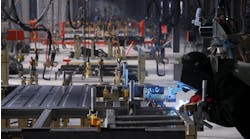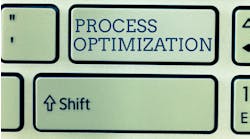For industrial manufacturers, it’s not a question of whether the circular economy will change how business is done, but when.
The industrial sector accounts for about a quarter of global carbon emissions. Consumers already prefer sustainable end products. Major manufacturers who buy industrial-manufacturing equipment have announced net-zero carbon goals and will continue to press for sustainability down their supply chains. And governments will demand stringent sustainability improvements as increasingly stark impacts of climate change force action toward concrete emissions-reduction targets.
Hitting those targets will, over time, involve tracking and reducing both direct and indirect emissions (classified as Scope 1, 2, and 3 emissions) throughout supply chains in which industrial manufacturers play such central roles.
Supplanting the “take-make-waste” of the old linear economy with the circular economy’s looping back of that “waste” into the production system will represent the most sweeping operational change since the Industrial Revolution introduced the mass production that industrial manufacturers now enable.
For this business, the circular economy will be revolutionary.
As Marie Antoinette would attest, revolutions can get ugly. Fortunately, this one will start with countless evolutions, ones that will help industrial manufacturers satisfy customers, improve sustainability, attract employees, stay compliant, and, not least, ensure profitability and growth over the long term.
The question is how to start your company on an evolutionary path towards circularity.
Start with a close look at your product portfolio and consider which ones might be candidates for combining with services and thereby transitioning, from the customer’s perspective, from the traditional customer-owned equipment model to one in which the machines of production become part of a product-service bundle. The fancy term for this is, of course, servitization. It’s the same idea as Ubering rather than owning a car.
Servitization will be indispensable to the success of industrial manufacturers in achieving circularity. First, selling a product-service bundle will involve service-level agreements with uptime and repair-time guarantees that the industrial manufacturer will be on the hook for delivering. Equipment that’s robust, modular, and easy to service and repair will inherently cut downtime and maintenance costs, thereby boosting margins. Such contracts may also include stipulations relating to energy efficiency.
Second, while technological progress and changing market needs will always encourage the development of new industrial “greener” products, servitization will reward those who can upgrade existing equipment to meet those needs at lower costs and lesser carbon footprints. Modularity and upgradability will be a big part of this story. To draw a consumer-products analogy, if you can swap out the old spinning hard drive of an otherwise capable laptop for a $100 solid-state drive, why drop two grand on a new computer?
With an understanding of where product-service bundling makes sense, reach out to customers who may be amenable to a pilot program to see how this new business model works. Perhaps they’ll start with equipment that’s prone to breakdown or is energy-hungry. What’s in it for them? Predictability; a transition to operational expense instead of capital expense; enhanced confidence in your product’s reliability and serviceability; and not having to worry about what to do with that equipment at end-of-life—whether that be refurbishment, resale, upcycling, or materials reclamation is on the industrial manufacturer.
Some customers will have different interests than others. Some may be most interested in energy efficiency. Others will hone in on servicing response times or upgradability. You’ll tailor the offering based on their tastes and yours. And you’ll see what works and what doesn’t work so well, and you’ll adjust.
That’s evolution.
Implicit in the above is a need for data. That’s nothing new for this industry, of course, but circularity increases complexity. Consider pricing. Rather than coming up with a figure for a piece of equipment and a service-and-repair contract, you now must incorporate estimates for future equipment upgrades, servicing costs (perhaps from outside vendors capable of fulfilling stringent uptime requirements), and potential future refurbishment and resale. As circularity takes hold, there will be solutions that automate pricing and enable dynamic modeling to help tailor diverse product-service bundles that satisfy customers while enhancing revenues and profitability for the industrial manufacturer.
Not every circular-economy experiment will work out. This will be a learning process. But the payoffs will be substantial—foremost, corporate viability as regulatory and market pressures make circularity a precondition for doing business at all. But circularity will also do much to address the challenge of attracting new talent to industrial manufacturing. Tough problems attract smart people, for one thing; add to that the sustainability benefits circularity will impart, and you’ve got a compelling proposition for young employees.
The circular economy is coming to industrial manufacturing. Either evolve to it now by learning, adapting, and innovating through small steps and lessons learned or face what could become a life-or-death emergency as changes in the commercial environment force the circular economy upon you, ready or not.
By Judy Cubiss, SAP’s global industry marketing lead for industrial manufacturing


